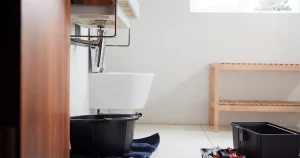In this article:
In today’s world of smart home technology, being able to control every aspect of your swimming experience with a few taps on your smartphone is a luxury that quickly becomes a necessity.
If you’re ready to say goodbye to tedious pool maintenance and hello to energy-efficient upgrades, a water-smart pool renovation might be just what your backyard needs. These renovations not only reduce utility costs but also support water conservation—and may even qualify for certain tax incentives, depending on your situation.
In this article, we’ll explore smart renovation ideas to make your pool more efficient, cost-effective, and eco-friendly.
Why Upgrade to a Smarter Pool?
Homeowners with pools use up to 49% more energy annually than those without, leading to significantly higher utility bills. According to the U.S. Environmental Protection Agency (EPA), water and energy-efficient home upgrades, including water-efficient pool designs and WaterSense-labeled products can dramatically cut both energy and water consumption.
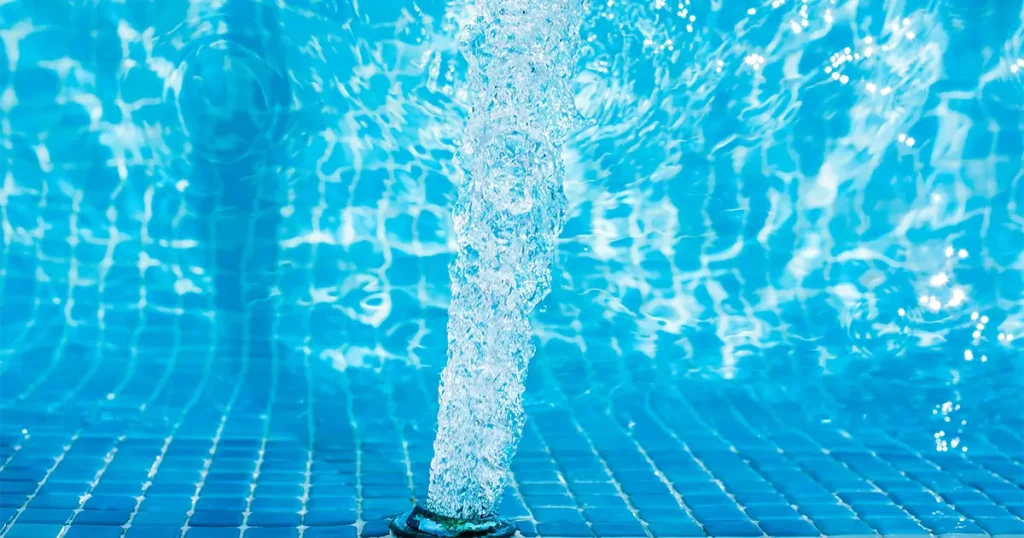
The benefits of a water-smart pool
The benefits of a water-smart pool upgrade include:
- Automation: Smart systems simplify maintenance with robotic or suction-side cleaners that reduce manual labor and save time.
- Energy Savings: Upgrading to energy-efficient pool equipment like variable-speed pumps and heaters cuts down on energy usage.
- Lower Bills: Smarter scheduling of cleaning, lighting, and heating helps reduce utility costs—plus, some equipment may qualify for energy rebates or home improvement tax credits.
- Water Conservation: Automated systems monitor water levels, reduce evaporation, and control refilling more efficiently.
- Healthier Water: Real-time monitoring keeps pH, chlorine, and temperature levels balanced for a safer swimming environment.
- Enhanced Safety: Smart pool covers, alarms, and motion sensors provide added protection for children and pets.
Related Reading: Water-Efficient Bathroom Ideas and Practical Plumbing Solutions
Best Pool Upgrades that Save Money, Time, and Energy
Upgrade to a Variable-Speed Pool Pump
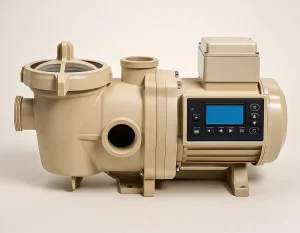
Newer pump models are generally more efficient than the old ones. Older pool pumps typically operate at a single speed and consume a large amount of energy. In contrast, variable-speed pumps can adjust their speed to match the pool’s needs—saving electricity and reducing noise and wear.
Look for ENERGY STAR® certified models, which can use up to 18% less energy than standard models.
Install a Larger Pool Filter
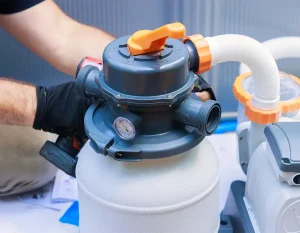 A larger filter increases the surface area for water flow, reducing the workload on your pump. This not only improves efficiency but also reduces energy consumption. In addition, since your pump will have to do less work, it will last longer with less wear and tear.
A larger filter increases the surface area for water flow, reducing the workload on your pump. This not only improves efficiency but also reduces energy consumption. In addition, since your pump will have to do less work, it will last longer with less wear and tear.
Switch to LED Pool Lighting
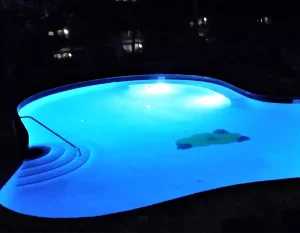
Although many pools traditionally use incandescent lights, they are outdated and energy intensive. LED lights last longer, use less electricity, and even offer customizable colors for added ambiance—all while saving on your power bill.
Consider switching to LED lighting in your next pool renovation.
Upgrade Pool Heating Technology
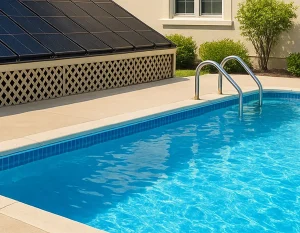
- If your pool is in direct sunlight, consider a solar heater and solar cover to retain warmth using the sun’s energy.
- For covered pools and shaded areas, an electric heat pump is a smart alternative. It uses ambient air temperature to warm the water and costs less to operate than gas models.
Automate Your Pool System
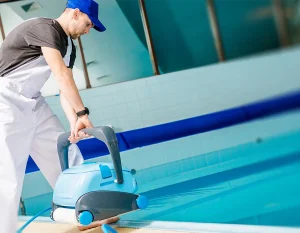
Smart home technology and automation systems let you control filtration, heating, lighting, and cleaning from your smartphone. An in-pool cleaning system, for example, can spray pressurized water to remove debris automatically.
If you’re not ready for full automation, consider a robotic pool cleaner—a standalone, energy-efficient solution that handles cleaning while you relax.
Install an Automatic Pool Cover
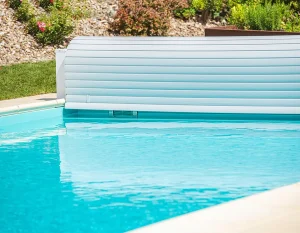
Automatic covers help maintain water temperature, reduce evaporation, and improve safety. By minimizing heat loss and water loss, they significantly reduce the need for refilling and heating.
Upgrade to a Darker Finish

A pool with a darker finish can absorb more UV energy from the sun , helping to warm the water naturally. It’s a simple way to enhance both aesthetics and energy efficiency.
Pool-Friendly Landscaping
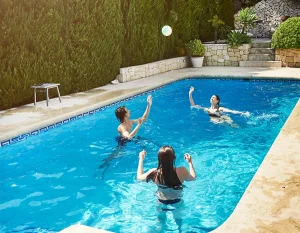
Strategically planted shrubs and trees act as natural windbreaks, reducing evaporation and helping your pool retain heat. Landscaping with drought-tolerant plants also supports broader water conservation goals.
Things to Consider Before Starting Pool Upgrades

Before diving into a pool renovation, keep the following in mind:
- Compatibility: Ensure your current pool systems can integrate with smart technology for optimal performance.
- Cost: While upfront investment can be high, long-term savings in energy and maintenance make it worthwhile.
- Customer Support: Choose systems with reliable support and intuitive apps or interfaces.
- Data Privacy: Select smart systems with strong cybersecurity to prevent unauthorized access.
Key Takeaways
Are you ready for a smarter poo? Water-smart pool technology has gone from futuristic concept to everyday solution. By upgrading your pool with energy-efficient equipment, smart automation, and eco-friendly design, you can enjoy a cleaner, safer, and more cost-effective swimming experience. And do not forget to check for added benefits of energy-efficient euipment rebates and tax credits.
To recap, here are the best upgrades to consider:
- Install a variable-speed pump
- Use a larger filter
- Switch to LED lighting
- Add a solar or electric heat pump
- Install an automatic pool cover
- Consider eco-friendly landscaping
- Automate cleaning and controls
- Upgrade to a darker finish
Looking to start your pool renovation this season? Browse our guide on when is the best time to renovate your home or explore our directory of licensed home improvement professionals. Happy pool renovating!


